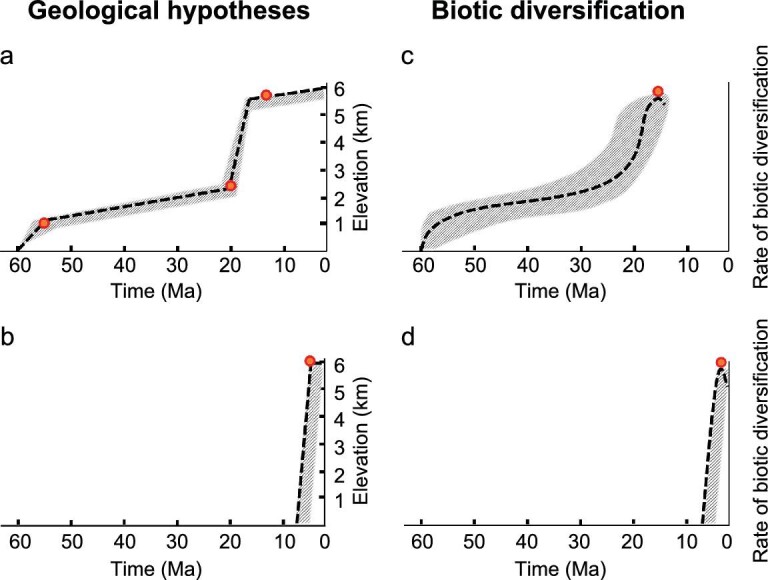Figure 2.

Schematic diagram of (a, b) two geological hypotheses regarding the uplift of the Himalaya to current elevations, and (c, d) the corresponding expected biotic assembly processes. The dashed lines show the general trends, with the range of consistent dates and elevations indicated by shading. The red solid circles indicate key time points. (a) The ‘Stepwise hypothesis’ refers to a model in which the Himalaya arose in a stepwise series of uplifts beginning in the Early Paleocene, but at a much faster rate during the Miocene (23–15 Ma). This diagram is adapted from Ding et al. [8]. (b) The ‘Late Orogeny hypothesis’ refers to a model in which the Himalaya started uplift during the Early Miocene and reached the current elevations much later (around 7.0–3.2 Ma). This diagram is drawn based on a synthesis of several studies [9,11]. (c) If the ‘Stepwise hypothesis’ is correct, the expected biotic diversification would begin in the Paleocene, but then exhibit a rapid increase during the early Miocene and hit the peak in the middle Miocene (ca. 15 Ma). (d) If the ‘Late Orogeny hypothesis’ is correct, the expected diversification of Himalayan biota would occur recently (after the Miocene), with a peak of diversification later than 7.0–3.2 Ma.
